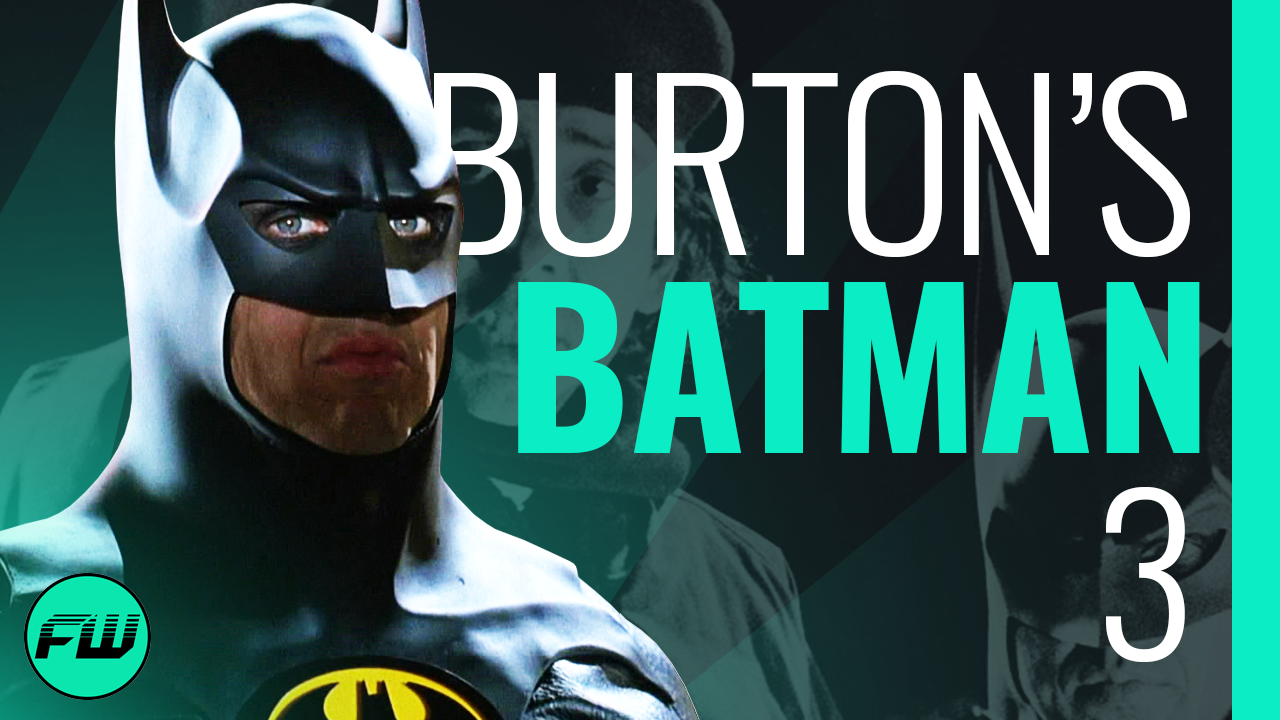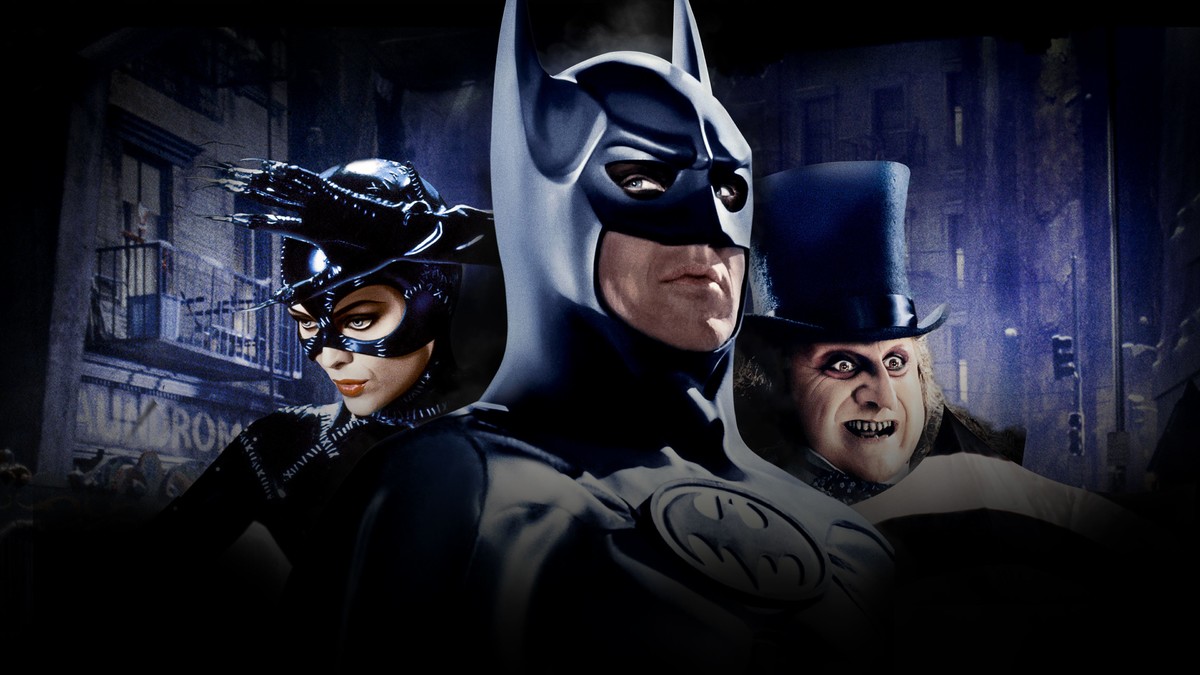In this FandomWire Video Essay, we explore Tim Burton’s cancelled Batman 3 and what could have been.
Check out the video below:
Subscribe & hit the Notification Bell so you never miss a video!
Tim Burton’s Cancelled Batman 3
This… was weird. So weird that it effectively KILLED Tim Burton’s plans for a third Batman film starring Michael Keaton. And while fans would get to see Keaton don the cowl once again over thirty years later in The Flash, they were robbed of a deeply gothic, dark, and wholly unique Batman trilogy that only Burton could have delivered. And that’s a shame because as details of the trashed threequel have slowly emerged, it’s clear that Burton’s film would have been several steps above Joel Schumacher’s Batman Forever that replaced it in the Warner Brothers lineup.
So, what exactly WERE Burton’s plans for Batman 3? And how much did his vision differ from the campy, neon-soaked spectacle that the series spiraled into? And perhaps even more bewildering, what exactly caused Warner Brothers to get cold feet and shift the direction of the Caped Crusader’s on-screen presence so drastically? Well, strap into the Batwing, polish that suit and let’s dive headfirst into what really happened to Tim Burton’s Batman 3.
In the years since Batman Returns left audiences shocked and confused by its violent and grotesque vision of Gotham, we’ve had five different live-action Batmen on the big screen. Val Kilmer, George Clooney, Christian Bale, Ben Affleck, and, most recently, Robert Pattinson. While MOST of them had their strengths and brought something of value to the performance, many fans have longed for the darkly gothic style of Tim Burton and Michael Keaton’s iteration. And while that nearly happened, a slew of angry parents and even… McDonald’s stood in the way.
In the 80s and 90s, the link between digital entertainment and toys was so incredibly strong, that cartoons were often created for the sole purpose of selling toys. Shows like Transformers, G.I. Joe, and My Little Pony are perfect examples. So, as Batman Returns prepared to launch into theaters in 1992, the marketing of handheld video games, action figures, and remote-controlled vehicles connected to the film went into overdrive. McDonald’s even licensed the merchandise tie-ins and offered Batman Returns soda cups and Happy Meal toys to eager families, building the expectation that the sequel would be a family-friendly event that kids could enjoy as much as the adults. That… was not exactly correct, and it was this Happy Meal connection that would prove to be one of the most damaging strikes against Burton’s take on the Dark Knight.
The film was violent, showcasing Batman lighting henchmen on fire, Catwoman being pushed out of a 20-story window and a terrifying Penguin being thrown into the sewers as a baby. Michelle Pfeiffer was overtly sexualized in a leather catsuit that was so tight, she had to be vacuum sealed into it. And Danny Devito’s performance as Oswald Cobblepot is truly the stuff of nightmares, with webbed fingers, inhuman features, and a black bile that spews and drools from the lips of his grotesque mouth. It’s a far cry from the character’s later portrayal by Colin Farrell as a husky mobster in Matt Reeve’s The Batman.
The outrage from both parents and children was swift and severe, with the film and its subsequent controversy quickly becoming a frequent topic of talk show debates. One such talk show featured Danny Slaski, a young boy acting as the Junior Movie Critic for USA Today. Danny said this of Batman Returns: “It was very violent. It was a total attack against kids. The whole movie.”
While calling the film an “attack against kids” seems like an excessive bit of hyperbole, it’s the last thing that McDonald’s wanted to hear considering they’d been marketing the film to children through their happy meals. When McDonald’s first made the deal to license the film’s tie-ins, they hadn’t even seen a rough cut of the movie yet and were completely unaware of its mature themes and depictions. They also were unaware that the Motion Picture Association of America was threatening to give Batman Returns the dreaded “R-Rating.” That fate was narrowly avoided by trimming some of the film’s more grim and graphic depictions of violence.
In the end, McDonald’s was forced to make a public apology, and Warner Brothers was willing to do just about anything to ensure they kept McDonald’s on their good side and kept Batman in Happy Meals. Unfortunately for Burton, that meant steering away from his vision for a third Batman movie, and into a more kid-friendly and toy-centric arena with Joel Schumacher.
Now, Batman Forever isn’t the worst Batman movie, that’s a title likely reserved for the fourth installment: Batman and Robin. However, it is widely panned by critics and audiences for its drastic departure from the two preceding films. And while Forever is excessively different from the stylistic choices that Burton had in mind, there are elements of his vision carried over.
One important similarity is that Burton’s film, which was tentatively titled Batman Continues, would have introduced Batman’s partner and sidekick, the Boy Wonder… Robin. However, he would have looked much different. Comedian Marlon Wayans, best known for his work on “In Living Color” and the 90’s sitcom “The Wayans Brothers” was set to play the role. In fact, Wayans had been hired to play a variation of the role in Batman Returns. That original script featured Wayans as a teenage auto mechanic credited only as “The Kid” who wore a set of garage overalls with the initial “R” embroidered on them. The plan was to introduce him in Batman Returns and feature his transformation into the crime-fighting vigilante Robin during Batman Continues.
Those plans were so firm, in fact, that Wayans had already signed his contract and been paid for the part. During an appearance on The Tonight Show with Jimmy Fallon, Wayans revealed he’d been paid one-hundred thousand dollars for the role, despite never appearing on film. He went on to joke that he’d spent all of the money in a week. According to Wayans, and corroborated by Burton, his part was cut from Batman Returns due to there already being too many characters sharing the screen. This was likely a smart choice considering how other comic book films have been dragged down by an over-bloated cast and script. Spider-Man 3 and The Amazing Spider-Man 2 are prime examples.
But Wayans was assured he’d be brought back for the next film… Joel Schumacher had other plans and hired Chris O’Donnell to play the role of Robin in his version of the film.
Michael Keaton and Tim Burton had a strong working relationship with several successful films under their belt, having already collaborated on Beetlejuice and both Batman films. And as Warner Brothers and Joel Schumacher reimagined the way Batman would appear on screen, Keaton began to lose his faith in the franchise. During an interview on the “Awards Chatter” Podcast, Keaton spoke bluntly, saying he passed on Batman Forever because: “It sucked. The script never was great.”
The Batman star had his own vision for what a third Batman film should look like, wanting to take the caped crusader back to his roots with a prequel acting as an origin story in the vein of Christopher Nolan’s Batman Begins. It’s an interesting idea that could have worked similarly to the Academy Award-winning Godfather Part 2, by splitting the movie into present-day and past events.
Considering he’d reportedly been paid five million for Batman and ten million for Batman Returns, Keaton’s passing on the film meant foregoing a significant payday and accentuates how strongly he felt about the direction the series was going without Burton’s involvement.
In many ways, Schumacher treated Batman Forever as a blank canvas, purging the film of the vast majority of actors from the Burton era, including Billy Dee Williams who’d played District Attorney Harvey Dent in 1989’s Batman. Comic book fans know, of course, that Harvey Dent goes on to become the criminally insane Two-Face. And Williams had every intention of reprising his role and seeing his character arc through to its villainous conclusion, even saying he’d taken the part originally with the expectation of being brought back as a villain in later films.
Two-Face WAS a villain in Batman Forever, but the role was instead played by Tommy Lee Jones, delivering the most confusing and over-the-top performance of his career.
It’s not known exactly which villains would have been featured in Batman Continues, however, there were several in consideration. One of course being Billy Dee Williams as Two-Face. Another rumored inclusion was to be The ScareCrow, with Burton allegedly wanting Chucky actor Brad Douriff to play the part of the psychology professor who uses fear toxins to torment his patients. Douriff has gone on record stating that he was not a big enough star and that Warner Brothers would not allow him to play the role.
Michelle Pfieffer was also intended to reprise her role as Catwoman. The studio was so sure about the character’s strength and importance to the franchise that they spent an unprecedented quarter of a million dollars to complete a last-minute reshoot, adding an ending scene which reveals that the presumed dead Catwoman had actually survived, only for the character to never be seen again.
The married screen-writing team of Lee and Janet Scott Batchler, who penned the screenplay for Batman Forever admitted that they wrote the part of Batman with Keaton still pictured in the role and the part of The Riddler with Robin Williams in mind. Williams’ mastery of both comedic and dramatic delivery would have made for a compelling performance, and he’d prove later in his career how convincing of a villain he could be with roles in films like One Hour Photo and Christopher Nolan’s remake of Insomnia. The latter collaboration gave fans hope that Williams would finally play the villain in Christopher Nolan’s Dark Knight Trilogy; however, that never happened either.
It’s likely that The Riddler would have played a prominent role in Burton’s Batman Continues as well, with the first draft of Batman Returns mentioning the brain-teasing villain in one of the film’s closing lines of dialogue. However, there’s no doubt that Burton’s version of the character would have been a far cry from the zany silliness delivered by Jim Carey.
We’ll never really know what might have been, but the loss of Tim Burton’s third Batman film leaves fans wondering what nightmarish tale of good versus evil we missed out on. To have the darkly gothic trilogy of Tim Burton AND the grounded-in-reality trilogy of Christopher Nolan would have made for an interesting comparison and exploration of the Caped Crusader.
What do you think? Should we have gotten Tim Burton’s Batman Continues instead of Schumacher’s Batman Forever? Did we miss out on a Burton-Batman trilogy that may have rivaled Nolan’s? Let us know in the comments.
And don’t forget to like the video and hit subscribe to never miss a video. We’ll see you next time.
Follow us for more entertainment coverage on Facebook, Twitter, Instagram, and YouTube.


